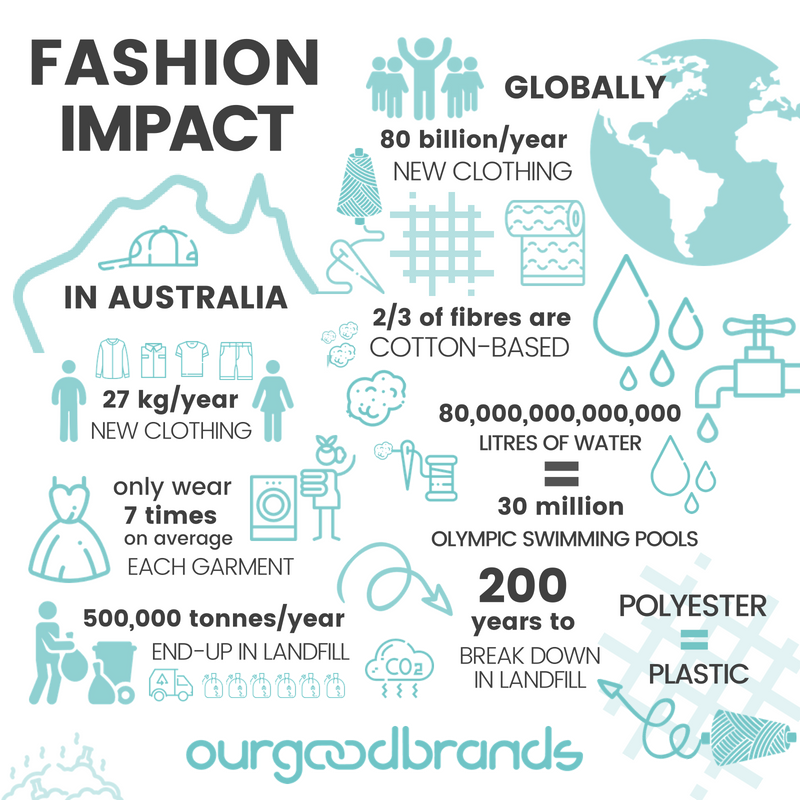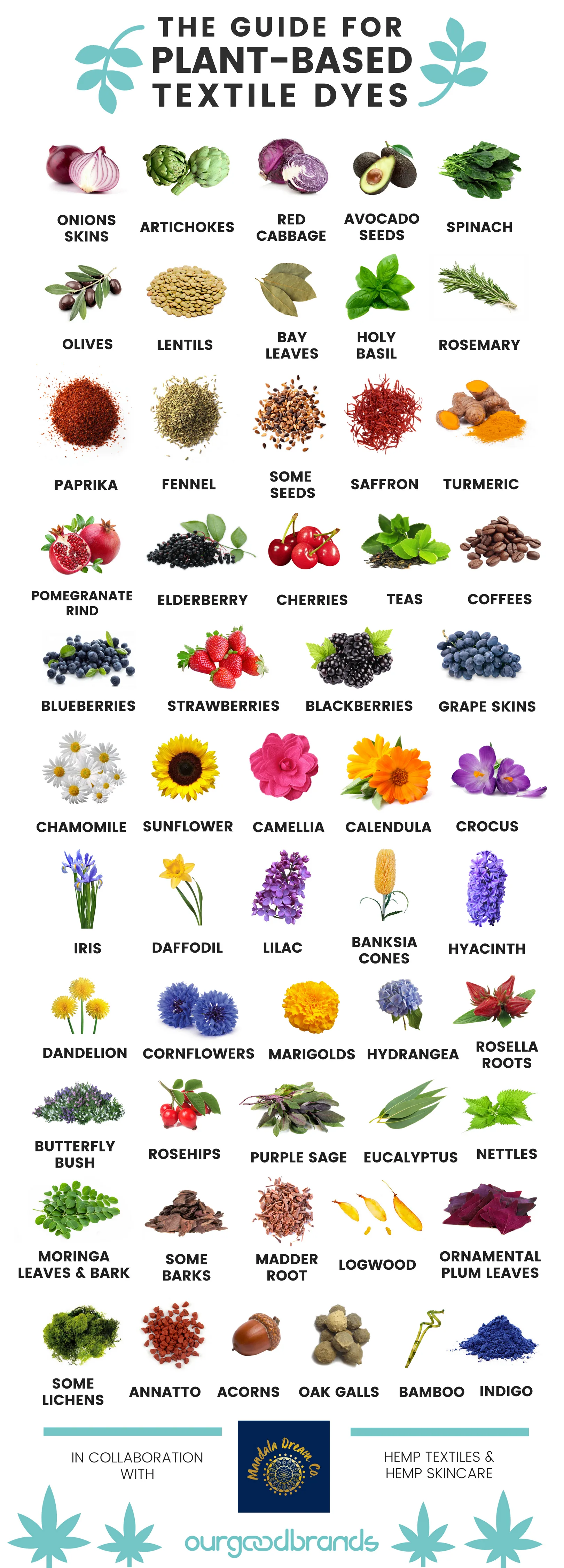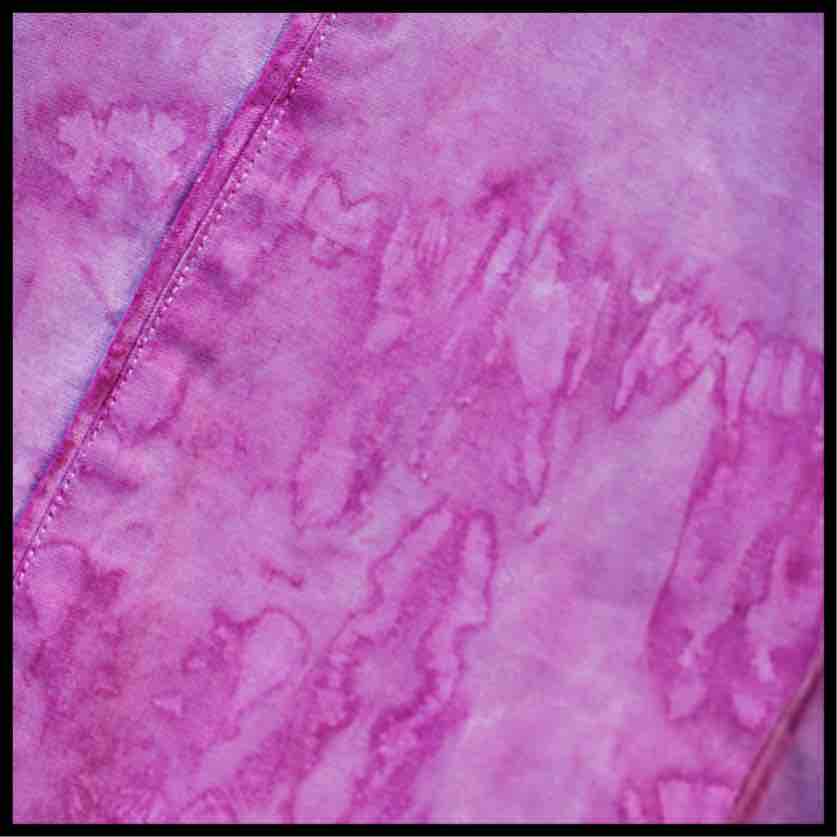Have you ever wondered where the natural dyes come from? Are you aware that dyes in the fashion industry are one of the biggest polluters? In this guide, Julie Grant, founder of Mandala Dream Co, covers the consequences of the synthetic dyes with surprising data and the best alternatives. Most importantly, she invites us to experiment by sharing some useful techniques on how you can make your own natural fabric dyes to produce sustainable and eco-friendly fashion. Learn from the best brands and choose eco dyes for a lower environmental impact, whether you manufacture or purchase!
Before we get started with the natural fabric dyes, Julie wants to share a bit of a preface to the following…
“As I did a little more research for the article I discovered it was much, much worse than even I imagined… which was pretty grim. I’m not a low vibe sort of person, so wasn’t thrilled with the tone of the piece as couldn’t find much ‘good news’. That being said technical advances are rolling out, and we as consumer are certainly becoming more woke… to the point that more and more businesses are starting to ‘get it’ and offer natural fabric dyes alternatives.”
The effects of synthetic fabric dyes on the planet and our health… when manufacturing, wearing and WASHING!
The textile industry is one of the most damaging industries to our waterways and our planet, only coming second in line to the agriculture industry which is of no great surprise. With pollution of our waterways at a pitiful all-time high, and many areas suffering drought, saving this precious resource, healing our waterways and curbing our ways is of an urgent and much-needed revolution.
The leftovers from a commercial dyebath contain ammonia, alkali salts, and heavy metals along with much of the original pigment of which many are exceptionally toxic with health impacts on both ourselves and our environment.…CLICK TO TWEET
Fabric mills spew millions of chemicals into the environment and waterways each and every year, chemicals such as chlorine, heavy metals, and formaldehyde with high PH which cause tremendous damage to the health of our planet and its people. The farming methods generally used in fabric production crops, the degrading of soils, the use of pesticides, herbicides and fertilisers along with criminal use of water need to change (don’t get me started on the Cotton Farmers and the Murray Darling Basin, along with cotton using over 23% of all pesticides worldwide!).
The beautiful colours and patterns we all adore on our fabrics is yet another deadly and toxic process further polluting our planet and causing illness to our people. Commercial dyes are full of amines such as toluidine and benzidine and many colourants used include chlorine (the organically bound kind) which is a well-known carcinogen. The leftovers from a commercial dyebath contain ammonia, alkali salts, and heavy metals along with much of the original pigment of which many are exceptionally toxic with health impacts on both ourselves and our environment. The effluent caused by this yearning for pretty colours is damaging beyond the current measure.

In the fabric and dye industries that continue to flourish in India and China (due to their low labour costs and our local high energy and labour costs), it’s possible to predict the colour of the fashion season upcoming simply by looking at the colour of the rivers due to the toxic runoff.
These chemicals that end up in the waterways via production often completed off our shores (and usually have no onsite water plant or filtration systems); not only poison the local’s lifeblood in their water but they evaporate into the air we breathe or are absorbed through our skin whilst wearing or sleeping in the fabrics.
These often present as an allergic reaction and may even cause harm to the babies of pregnant women before birth. Due to this chemical pollution, the normal function of cells is traumatised and this, in turn, can alter the physiology and biochemical mechanisms. Heavy metals, present in textile industry effluent, are not biodegradable and therefore build up in the organs of the body over a period of time. This pollution is incredibly damaging to aquatic life, the food chain, the waterways, the ecosystem and ourselves.
In the fabric and dye industries that continue to flourish in India and China it’s possible to predict the colour of the fashion season upcoming simply by looking at the colour of the rivers due to the toxic run off. #ecofriendly…CLICK TO TWEET
Big business is really key to changing the landscape of the dye industry and there have been some technological advances by some big brands (which of course are the only ones who can afford it). A business called AirDye claim that their technology uses only a fraction of the water and energy versus regular methods, they impregnate dye within the fibre versus on the fibre.
Adidas has been trialling a near waterless dye process utilising pressurised carbon dioxide (which they capture then reuse) to disperse dye. Similar ideas have been used by other brands such as Ikea and Nike, but with demand for cheap fashion continually on the rise any changes to local laws in the cheap labour countries of fabric production and dye will simply move operations to another place to prosper until WE change our own fates based on what we buy, or don’t buy.
What fabrics using synthetic dyes are the most polluting ones?
China is currently the Jeans and Denim capital of the world: 1 in 3 pairs of jeans sold globally is made in China. Xintang factories produce over 300 million denim products each and every year. You’d think the town would be booming, however, it’s so badly polluted by the industry that they can’t give away houses there. The effluent from the dye factories are directly flowing into their East River high in bleach, synthetic indigo, potassium permanganate and the amount of copper, lead and cadmium found in the river toxic with a PH level of almost 12. After much local outrage the government moved many factories into an industrial park supposedly ‘environmental industrial park’ but with air smelling of sulphur, dark blue water in puddles and the dust on the road is blue there is simply nothing ‘environmental’ about this industrial park, they’ve simply moved the problem and spread the pollution further afield. What was once a village of fruit growers and fishing is now a wasteland which is contributing to infertility amongst the workers.
Denim is made from cotton and requires 0.68 kg of cotton to produce a single pair of jeans – which requires almost 6000 litres of water to grow, add to that the dyeing process it’s not ever been a sustainable industry. The current wars may be fought over oil, but at this rate, the wars will be fought over water! There are plenty of alternatives to oil, but water?
The leather is another obvious polluter and eco-disaster. The Pro Leather lobbyists insist that it’s a natural material because it’s a by-product of the meat industry to somehow make consumers feel better? The environmental impact of leather production which includes salts, fungicides, acids, chromium, sulphates and an abundance of water is yet another major polluter in the industry. Tanneries not only discharge contaminated wastewater into the rivers of low-income towns they also dump chromium mixed solids, skins, hides and fats onto the banks of rivers. Leading to contamination of water sources and soils, with cadmium, iron, chromium, nickel, lead to name just a few whilst the skin/hide treatment processes release sodium, magnesium and copper.
Even fabrics considered to be ‘eco’ have hidden secrets. Bamboo, for example, has recently had a surge of popularity in the eco world, the plant is fast growing and usually organic given it needs very little pest control. One method of manufacturing bamboo is mechanical (crushing of the woody part of the plant). This is usually named bamboo linen yet very little of this is manufactured due to its high labour costs and therefore its ultimate purchasing costs. Most of the bamboo fabric available is produced using chemical manufacturing which includes cooking the leaves and shoots in chemical compounds including sodium hydroxide and carbon disulphide, which have both been found to cause health problems. New ways of manufacturing this fabric are ongoing and some are chemical free, but be sure it’s certified if you wish to try it and gain the benefits to the planet and its people. 
*Australians are huge consumers of fashion, consuming up to 27kgs of new clothing per person each and every year, and buying more and more as the designers are spewing out micro-seasons to sell even more!
*On average women wear a piece of clothing just 7 times before it becomes part of our addiction to waste and pollution.
*In Australia alone, more than 500,000 tonnes of textiles and leather end-up in landfill annually.
*According to current statistics over 80 billion pieces of clothing are consumed globally every year.
*Whilst water consumption due to production taps out (pardon the pun) at 80,000,000,000,000 litres… Put that into perspective: that’s over 30 million Olympic swimming pools.
*2/3 of all fibres utilised in the making of our fashion are cotton-based, putting huge environmental impact globally.
*Clothing made from polyester, which is essentially a plastic, takes up to 200 years to break down in the landfill.
*Even fibres such as wool and cotton are not meant to be in the landfill, yes they can biodegrade and compost, but landfill does not give the right conditions for that. Wool leaks a version of ammonia in the landfill.
Combine some of those catastrophic figures with the unethical labour statistics worldwide, child labour, the lack of quality, the dye processes detailed above and the consumers yearning for the latest fashion and you’ll start to see just a glimpse of the burden this industry has on our planets collective.
Natural fabric dyes alternatives
There are more environmentally aware ways to dye fabrics, and of course the option to produce beautiful patterns dependant on the techniques used. You can trace the history of colouring fabrics back to ancient times with the Mayans, Egyptians and the Japanese famous for their Indigo, along with ancient batik and shibori and wax techniques.
Washing our garments and linens further pollutes the waterways with microfibers and leaching of chemicals along with the detergents used, but let’s look at some of the options for colouring our fabrics as “Fashion to Die/Dye” for shouldn’t be a literal statement.
Bear in mind though just because something is ‘natural’ that does not mean it’s necessarily non-toxic or non-harmful to the environment. So, is eco dyeing really worth all the hours of planting, caring, harvest, drying, foraging, fermenting and love? And are all eco dyes worthy of our attention?
There are so many natural options to dye with and a textile artists alchemy is really only fully known by each artist from their creations and experiments which they journal avidly. Each eco choice of natural fabric dyes, it’s mordant method, tannin, the fabric type, temperature, season, soil, modifier etc will produce a different effect. You’ll find most true eco dyers will use only what they have readily available to them so the list will differ by country, and by climate.
There are wonderful books, guides and workshops on the process… but tread carefully so you don’t also become part of the problem and do your research in regard to toxicity and sustainability.
Let’s look at some of the eco-friendly and natural fabric dyes with plants: INFOGRAPHIC VISUAL
Onions skins, holy basil, turmeric, indigo, some lichens, some barks, some seeds, eucalyptus leaves, bloodwood kino, logwood, avocado seeds, sunflower seed hulls, teas, coffees, some roots, acorns, oak galls, pomegranate rind, marigolds, annatto, saffron, butterfly bush, banksia cones, bamboo, cherries, elderberry, madder root, grape skins, rosehips, strawberries, purple sage, blackberries, blueberries, cornflowers, hyacinth, olives, red cabbage, ornamental plum leaves, artichokes, hydrangea flowers, calendula, camellia, chamomile, moringa leaves and bark, lilac flower, nettles, rosemary, spinach, rosella roots, lentils, dandelion, fennel, iris, bay leaves, crocus, daffodil, paprika, weld… And that’s just the start!!
Generally, much eco dyeing is an almost brewing a tea method, but there are plenty of exceptions that work better with fermentation, solar dying, steaming methods, drying and crushing. That’s just half the fun involved with dabbling in plant-based or eco dyeing… the experimenting.

You’ll find some plant eco dyes may be a light fugitive (such as turmeric or logwood) and will fade quickly if exposed to the sun. Some others such as indigo require an oxidation process (up to 100 days) to fully complete the process; others may react to PH levels in your washing water or the detergent used (try Soap nuts or berries, which also is a better eco alternative).
Eco-friendly and natural fabric dyes certainly are beautiful, but labour intensive. And you’ll see this reflected in the pricing of such creations by artisan or textile artists. But for big brands and businesses, natural fabric dyes may not be sustainable, as the use of textiles and land to grow the natural resources are some of the biggest issues.
Most natural fabric dyes stuff require land to plant… such as indigo, turmeric, onion skins etc, however, a small eco-business can manage this by either growing what they need personally or by foraging and utilising waste from other businesses in the gardening or food industries. It’s certainly a way to recycle materials that would otherwise be thrown away.
On the other hand, most natural fabric dyes require bigger quantities versus synthetic dyes to create the same depth of colour. Some need metal mordants, modifiers (some are highly toxic) or tannins; also, the colours fade over time (beautifully though).
The answer for mass production could be plant and eco dyeing but as they are all about fast and volume it’s probably somewhere in the middle, a hybrid of synthetic and natural dyes, but consuming less by US is the ultimate answer.

If you’re wanting to make a difference limit buying new fast fashion and décor; instead, cherish and care for what you already have. Investigate some of the fabulous Eco Stylists, such as the talented Faye de Lanty and learn how to a thrift shop, upcycle, recycle, revive and reuse. Enrol in an eco dye course or workshop and learn the joy of natural fabric dyeing and textile art in a safe non-toxic way. Research your purchases, the companies ethos and ethics and what they stand for (and don’t)! Quality is always the go-to over quantity and will outlast any fast fashion ultimately saving you money as well as our planet and our health.
As consumers it’s only us that can cause the necessary changes to take place, our dollars, and our improved habits are all that’s needed for this Revolution. And we’re ready for it, even though we’re late to the party, we believe that the younger generation will push the agenda and it’s time for designers, brands and big business to get on board before they go the way of the dinosaurs, and whilst researching for this article I learned… that may not be a bad thing. Buy small, recycled, thrifted, sustainable, slow and ethically and you’ll be doing yourself and our planet a favour.
Eco-friendly brands using natural fabric dyes
Here are a few brands, businesses and individuals pioneering this new Green wave of sustainable, eco and ethical production:
Kantala. These deep cultural rooted vegan handbags present cheerful masterpieces carrying certifications for high ecological standards. They exist to represent Sri Lanka’s natural beauty and vibrant, colourful culture using the Hana plant as the core material. During the harvesting process of the Hana plant, the artisans do not use machinery and manually extract the fibre from the leaves by using wooden tools, which have remained the same for over three centuries. The fine white colour fibre is then dyed and woven into mats using a combination of vegetable dyes (such as pods from the belleric tree) and eco-friendly reactive dyes, which are both OEKO TEX 100 and ISO certified.

Gold is a Neutral. Using the Ajrakh technique, which involves between around fifteen steps of rinsing, applying to resist, printing and dyeing; the art form is largely practised by members of the Khatri community whose name literally means ‘one who fills with colour’. The traditional natural dyes are made from fruit and vegetable skins to roots, tree barks, indigo, turmeric and even rusty scrap metal. The finished Ajrakh pieces are jewel-coloured.

Mandala Dream Co adores industrial hemp… Hemp is unique, every part of the plant has use and value. Yes, it’s the same genus as Cannabis sativa however industrial hemp is a distinct strain with unique biochemical composition and uses which are one of the mother natures wondrous gifts to us. You can’t smoke hemp! All of the natural colours utilised in these creations are hand eco dyed using natural plants, tannins and infusions, toxic and metal mordant free.

